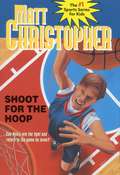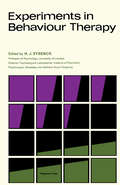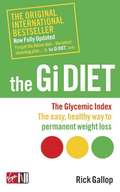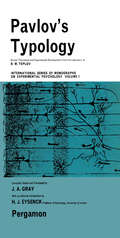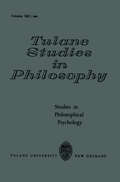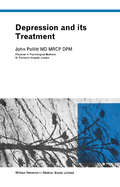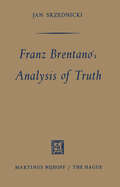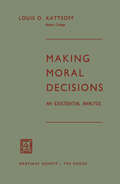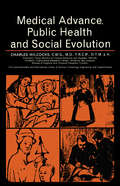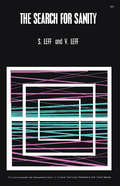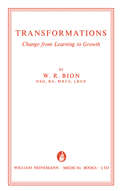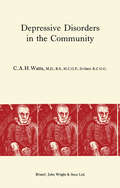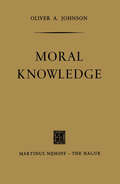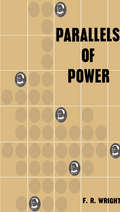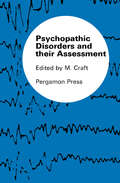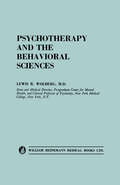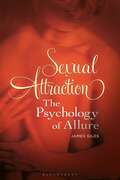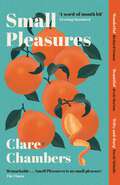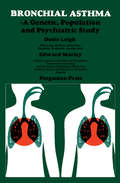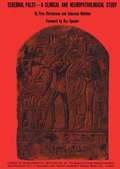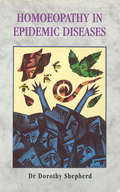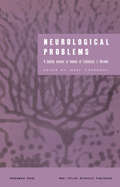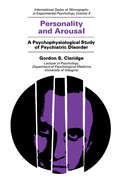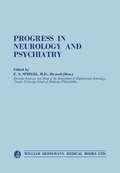- Table View
- List View
Shoot for the Hoop
by Matt ChristopherWhen Rusty Young is diagnosed with diabetes, his parents want him to stop playing basketball, but Rusty doesn't want to. When Rusty learns that his friends have formed a summer league team, he is determined to persuade his parents to let him join them.
Experiments in Behaviour Therapy: Readings in Modern Methods of Treatment of Mental Disorders Derived from Learning Theory
by H. J. EysenckExperiments in Behavior Therapy: Readings in Modern Methods of Treatment of Mental Disorders Derived from Learning Theory focuses on experiments involving the application of modern theories of learning and conditioning to behavior disorders.The selection first offers information on the nature of behavior and systematic desensitization treatment of neuroses. Discussions focus on the technique of systematic desensitization, examples of hierarchies from actual cases, and desensitization procedure. The text then ponders on experimental desensitization of a phobia, treatment by a method derived from experimental psychology, and treatment of anxiety and phobic reactions by systematic desensitization psychotherapy. The publication examines the treatment of chronic frigidity by systematic desensitization, application of reciprocal inhibition therapy to exhibitionism, and group therapy of phobic disorders by systematic desensitization. The isolation of a conditioning procedure as the crucial psychotherapeutic factor; application of learning principles to the treatment of obsessive-compulsive states in the acute and chronic phases of illness; and case of homosexuality treated by aversion therapy are also discussed. The selection is a dependable source of data for readers interested in behavior therapy.
The Gi Diet (Now Fully Updated): The Glycemic Index; The Easy, Healthy Way to Permanent Weight Loss
by Rick GallopThe Original International Gi Diet Bestseller, Now Revised And Updated- Over 40 all new recipes and meal plans- Over 100 new red, yellow and green light food listings- Updates on everything from low carbs to office lunches and family meals- More readers' comments and suggestionsMost diets fail for these three reasons - you go hungry, they're too complicated or they are simply unhealthy. With Rick Gallop's acclaimed Gi diet- you won't feel hungry or deprived- you will never have to count calories, carbs or points again- it's healthy and nutritious and will reduce your risk of major diseases.Based on the Glycemic Index, or GI, which rates foods according to how fast they are digested, the Gi Diet makes choosing the right food simple with its unique, easy-to-follow traffic light system:*Foods to avoid*Foods to eat occasionally*Foods to eat as much of as you wantAnd the benefits are more than just weight loss! Changing your eating habits can also help prevent life-threatening illnesses, like heart disease and diabetes."Losing weight is relatively easy with many "fad" Diets; maintaining the loss with these diets is difficult and largely impossible to sustain. Rick Gallop has found the key to permanent weight loss"
Pavlov's Typology: Recent Theoretical and Experimental Developments from the Laboratory of B. M. Teplov Institute of Psychology, Moscow
by H. J. Eysenck J. A. GrayInternational Series of Monographs on Experimental Psychology, Volume 1: Pavlov's Typology presents problems of personality and the theoretical framework done in the U.S.S.R. Part 1 of this book deals with the development of Pavlov's theory of personality on experiments conducted on dogs and the problems encountered in studies of higher nervous activity in man and animals. These tests include investigation into the capacity of cortical cells of the test subject; the speed of movement and termination of the nervous process; and the speed of formation of positive and negative conditioned connections. Part 2 is the application of Pavlov's theory of types to individual differences in human beings. This part emphasizes that when using data from Pavlov's studies of animals, typological differences are considered when applied in man; that experimental methods are to be improved; and that operations definitions and concepts can change. Part 3 concerns experiments from Teplov's laboratory on the dimension of strength of the nervous systems in human beings. This strength is shown from the working capacity of nerve cells as 1) the strength of excitation the nerve-cell can endure when a stimulus acts on it in a single time and 2) the time that the nerve-cell can endure prolonged stimulus or at shorter but frequent intervals. The conclusions observed in strong subjects and weak subjects are then analyzed. This book can be appreciated by psychiatrists, psychologists, behavioral scientists, and students and professors in psychology.
Studies in Philosophical Psychology (Tulane Studies in Philosophy #13)
by James K. Feibleman Harold N. Lee Donald S. Lee Shannon Du Bose Edward G. Ballard Robert C. Whittemore Andrew J. ReckDepression and Its Treatment
by John PollittDepression and its Treatment focuses on medical interventions in the diagnosis and treatment of depression, as well as identification of symptoms and possible mechanisms of treatment. The book first offers information on the concept and classification of depression, physiology and psychopathology, and clinical types of depression, including classification of depressive illnesses and etiology. The publication then takes a look at the treatment of psychological and physiological depression and complications of depression and their treatment. The text ponders on the prognosis of psychological and physiological depression and critique of existing terminology, as well as illustrative case histories of depression. The manuscript is highly recommended for clinicians and psychiatrists wanting to explore the approaches in the treatment of depression.
Franz Brentano’s Analysis of Truth
by Jan SrzednickiFranz Brentano 1 was an important philosopher, but for a long time his importance was under-estimated. At least in the English speaking countries, he came to be remembered best as the initiator of a philoso phical position which he in fact abandoned for good and sufficient 2 reasons. His ultimate and most important contributions passed almost unnoticed. Even such a well-informed and well-prepared book as Passmore's IOO Years 01 Philosophy (Duckworth, 1957), is open to the same comment; Passmore concentrated his attention on the early Brentano, because he regarded his influence on the British philo sophical scene as being confined to Brentano's early work. Brentano's pupils, e. g. , Husserl, Meinong, Marty and Twardowski, were often influential and, often enough, they departed from the strict common sense and advisedly cautious attitude of their great teacher. Thus even on the continent, the public image of Brentano tended to be incomplete (and sometimes distorted), outside the narrower circle of pupils, followers, and people with special interest. This, or very nearly this, was still the case in 1955, when my contacts with the followers of Twardowski made me turn towards the study of Brentano. Since then there has been a gratifying revival of interest in his work. His early book on Aristotle was reprinted in German and two of his main positions, Psychologie and Wahrheit und Evidenz, are appearing in English translations. Translations into other languages, e. g.
Medical Advance, Public Health and Social Evolution: The Commonwealth and International Library: Liberal Studies Division
by Charles WilcocksMedical Advance, Public Health and Social Evolution is an attempt to relate medical progress to the intellectual climate of the various broad periods of history, and to the social changes which took place in those periods and which influenced—and were influenced by—medical progress. Since the intellectual developments and historical events which have impinged upon medical progress have occurred in the setting of history, it has therefore been convenient to divide the book into chapters with a historical basis. The book begins with discussions of Greek and Roman life and medicine; Indian and Persian life and medicine; the Middle Ages; and the Renaissance and the resuscitation of science; and the sixteenth, seventeenth, and eighteenth centuries. Separate chapters then deal with the development of hygiene; the bacteriological era; bacteriological control of food and water; and disease transmission by arthropods. Subsequent chapters cover drugs, antibiotics, hormones, and anesthetics; occupational medicine; degenerative diseases, cancer, radiology, and medical genetics; psychological medicine; and statistical methods and experiments on man and animals.
Psychosomatic Disorders in Adolescents and Young Adults: Proceedings of a Conference Held by the Society for Psychosomatic Research at the Royal College of Physicians, London. November 1960
by John Hambling Philip HopkinsPsychosomatic Disorders in Adolescents and Young Adults covers the proceedings of the 1960 Conference, held by the Society for Psychosomatic Research at the Royal College of Physicians, London. This conference considers psychosomatic disorders occurring between the ages of 15-25 years and discusses the mental transformation from childhood to adult maturity. This book is organized into eight sessions encompassing 26 chapters. The first two sessions review the concepts of mental health and the psychosexual development in adolescence. The next sessions looks into the issues of teenage pregnancy, menstrual disorders, emotional sweating, male sexual disorders, epilepsy in adolescence, and psychosomatic aspects of acne vulgaris. These topics are followed by discussions on stress-related disorders, including tuberculosis and acute appendicitis. The remaining sessions describe certain aspects of mental transformation, such as the link between family and emotional maturity and fitness for marriage.
The Search for Sanity: The Commonwealth and International Library
by S. Leff V. LeffThe Search for Sanity provides a comprehensive discussion of the issue of mental illness. The book begins by addressing the question of whether society is sick. This is followed by separate chapters on the social aspects of mental health; the problems caused by sex such as prostitution, sexually transmitted disease, and illegitimate births; how the quest for power can destroy people; and ways people try to escape from reality, including drug use and alcohol consumption. Subsequent chapters cover the treatment for mental illness, how treatment helps, hospital care, and ways the community can help. The final chapter deals with the promotion of mental health and prevention of mental illness.
Transformations: Change from Learning to Growth
by W. R. BionTransformations: Change from Learning to Growth is a 12-chapter text that explores the fundamentals and principles of psycho-analytic theories, transformations, and invariants. This book begins with a clinical illustration of the distinction between the patient’s experience and the psycho-analyst’s experience. The succeeding chapters cover the influence of verbal expression, emotional experience, state of mind, and consciousness in psycho-analysis and transformation. These topics are followed by discussion on the relationship of the “no-thing" and the thing, wherein the personality that is capable of tolerating a no-thing can make use of the no-thing, and so is able to make use of the so-called thoughts. The remaining chapters describe a clinical system that would represent the chief clinical systems that can be seen to exist in the analytic situation. These chapters also examine the gap between reality and the personality, which are aspects of life with which analysts are familiar under the guise of resistance. Resistance operates because it is feared that the reality of the object is imminent. This book will be of value to psycho-analysts, psychologists, and psychiatrists.
Depressive Disorders in the Community
by C. A. WattsDepressive Disorders in the Community describes the diagnosis and treatment techniques of 60 case histories of depressive disorders. These cases are collected by one family doctor over a period of some sixteen years, in a single rural community. This book is composed of 10 chapters, and begins with studies of the nature of depressive illnesses and the controversial issue of the number of depressed persons in the community. The subsequent chapters describe the clinical symptoms and manifestations, as well as long-term observation of endogenous depression cases. These topics are followed by discussions on the clinical manifestations of patients with suicidal tendency. The concluding chapters focus on the treatment options of depressive patients, along with an overview of the social problem of depression. This book will be of great value to psychiatrists, general medical practitioners, and social workers.
Moral Knowledge
by Oliver A. JohnsonAs its title indicates, this book is concerned with two different fields of philosophy, ethics and epistemology. The bulk of the argument is devoted to epistemological questions, as these arise within the context of morality. Hence, the conclusions I reach could probably best be described as prolegomena to the elaboration of a theory of ethics. I have plans, which I hope will be realized in the next few years, of elaborating such a theory. I started work on Moral Knowledge in the summer of 1958 with the help of a University Faculty Fellowship, for which I am most grateful. of the research for the book, as well as a good bit of its writing, Much was done in two libraries, The University Library, Berkeley, and the Bodleian Library, Oxford. Members of the staffs of both libraries, by their courtesy and helpfulness, lightened immeasurably the task of my research. lowe a special debt of gratitude to four people-to Mr.
Parallels of Power: An Introduction to Some Individualists of Church and State
by F. Richard WrightParallels of Power: An Introduction to Some Individualists of Church and State is a 21-chapter text that covers the leading persons in Church and State in their respective periods of history. In the early days of the Church the Christian fathers worked inside the framework of the Roman Empire and used its organization as the basis for the spreading Christian churches. By the 17th century then, the relations between Church and State had turned full circle, from the early days of struggle between them for supremacy, the Church had become the main support of the National State. Each chapter discusses the life story, influence, and the struggles of the leading religious figures, both in Church and State. Professional historians will find this book rewarding.
Psychopathic Disorders and Their Assessment
by Michael CraftPsychopathic Disorders and their Assessment considers the diverse views and significant developments in understanding psychopathic disorders. This book is composed of 12 chapters, and begins with a description of the primary and negative features of the condition. The subsequent chapters are concerned with the methods of disposal of a psychopath under English law, the safeguards available both to the individual and to society within and without the Mental Health Act, and the extent to which this disposal mechanism was used. These topics are followed by discussions on the causation of psychopathic disorder; the electroencephalographic and psychological techniques for the disorder evaluation; and various methods of patient care. The last chapters consider the law and practice relating to psychopathic disorder and British facilities for the treatment of psychopaths. This book is of value to psychologists and psychiatrists.
Psychotherapy and the Behavioral Sciences: Contributions of the Biological, Psychological, Social and Philosophic Fields to Psychotherapeutic Theory and Process
by Lewis R. WolbergPsychotherapy and the Behavioral Sciences discusses the techniques used in neurophysiological analysis. It defines the neuronal building blocks. The book provides a detailed examination of the brain. This is followed by a discussion of the function of cerebral cortex. A chapter of the text focuses on biochemical interactions including neuropharmacology and psychopharmacology. The volume defines such terms as genetics, behavior genetics, and ethology. This is followed by a discussion on the conditioning of neural circuits. Another chapter is devoted on the examination of stress and adaptation. Ontogenetic maturation, developmental, and personality theories are explored analytically. The development of personality is the focus of fourth chapter. Concepts such as learning theory, learning principles, and psychoanalytic theory are fully explained. Cultural anthropology is the subject of the tenth chapter. While cybernetics is discuss in the eleventh chapter of the book. The book will provide useful information to psychologists, psychoanalysts, students, and researchers in the field of psychology.
Sexual Attraction: The Psychology of Allure
by James GilesHow and why does sexual attraction happen? This book is an exploration of the universal yet highly individualized experience of being sexually attracted to another person.Incorporating interviews, research findings, and excerpts from romantic and erotic literature, lyrics, and film, Sexual Attraction: The Psychology of Allure explores a subject that is central to the human experience and highly relevant not only in personal, intimate interactions but also other relationships as well. Although the causes and effects of sexual attraction have been studied, sexual attraction itself—how we experience others in terms of their sexual attractiveness—remains a neglected, rarely researched topic.Scholar James Giles presents jargon-free information that is accessible and fascinating to the general reader as well as highly useful and informative to students and researchers in social psychology, sexology, sex and marital therapy, and relationship counseling. The book explores subjects such as how sexual attraction is fundamentally different from other forms of interpersonal attraction and how at the heart of sexual attraction lies the experience of allure—something that makes one feel helplessly drawn towards an intimate physical joining with the sexually attractive person. The allure of strangers, cross-sex friends, sexual friends ("friends with benefits"), and romantic partners are all addressed, revealing the often subtle heterosexual attraction that typically exists between males and females in all their relationships, including between those who are ostensibly "just friends."
Small Pleasures: Longlisted for the Women's Prize for Fiction
by Clare ChambersLONGLISTED FOR THE WOMEN'S PRIZE FOR FICTION 2021'A WORD-OF-MOUTH HIT' Evening Standard 'A very fine book... It's witty and sharp and reads like something by Barbara Pym or Anita Brookner, without ever feeling like a pastiche'David Nicholls'Perfect'India Knight 'Beautiful' Jessie Burton'Wonderful'Richard Osman 'Miraculous'Tracy Chevalier 'A wonderful novel. I loved it'Nina Stibbe 'Effortless to read, but every sentence lingers in the mind' Lissa Evans 'This is one of the most beautiful books I have ever read. I honestly don't want you to be without it'Lucy Mangan'Gorgeous... If you're looking for something escapist and bittersweet, I could not recommend more' Pandora Sykes'Remarkable... Small Pleasures is no small pleasure'The Times'An irresistible novel - wry, perceptive and quietly devastating'Mail on Sunday'Chambers' eye for undemonstrative details achieves a Larkin-esque lucidity' Guardian'An almost flawlessly written tale of genuine, grown-up romantic anguish' The Sunday Times 1957, the suburbs of South East London. Jean Swinney is a journalist on a local paper, trapped in a life of duty and disappointment from which there is no likelihood of escape. When a young woman, Gretchen Tilbury, contacts the paper to claim that her daughter is the result of a virgin birth, it is down to Jean to discover whether she is a miracle or a fraud. As the investigation turns her quiet life inside out, Jean is suddenly given an unexpected chance at friendship, love and - possibly - happiness. But there will, inevitably, be a price to pay.Book of the Year for: The Times, Daily Telegraph, Evening Standard, Daily Express, Metro, Spectator, Red Magazine and Good Housekeeping
Bronchial Asthma: A Genetic, Population and Psychiatric Study
by Denis Leigh Edward MarleyBronchial Asthma: A Genetic, Population and Psychiatric Study presents the main theories of the cause of asthma which states that attacks occurred as a result of pathological changes in the lungs, heart, or large vessels. It discusses that spasms and paralysis of the bronchi were produced by nervous or humoral changes, or from bronchial exudation. Organized into 15 chapters, this book starts with an overview of the relationships between bronchial asthma and several conditions commonly regarded as allergic in nature, including hay fever, eczema, vasomotor rhinitis, urticarial, gastro-intestinal allergy, and psoriasis. This text then discusses the Weinberg genealogical proband method. Other chapters explore the inherited susceptibility of the bronchial tree to dysfunction, be it inflammation, as with bronchitis, or spasm, as with asthma. The final chapter deals with the inquiry using the Weinberg genealogical proband technique into the genetics of bronchial asthma. This book is a valuable resource for physicians, dermatologists, and allergists.
Cerebral Palsy: A Clinical and Neuropathological Study
by Erna Christensen Johannes C. MelchiorCerebral Palsy: A Clinical and Neuropathological Study is an account of a detailed study in which obstetrical, neonatal and neurological investigations on a large group of patients are presented with full neuropathological data found at subsequent necropsy. The book discusses the general autopsy findings and neuropathological techniques; as well as neuropathological findings in the different clinical entities. The text also describes the neuropathological findings and classification; progressive encephalopathies; and epilepsy. Neurologists will find the book invaluable.
Homoeopathy In Epidemic Diseases
by Dr Dorothy ShepherdHere is a vital tool of reference that should always be at hand as it gives vital information for dealing with Epidemic diseases: information which can be followed by both the novice as well as the experienced practitioner.Homoeopathy can quickly overcome measles, scarlet fever, influenza, whooping cough, chicken pox, mumps, diphtheria and other ailments. Furthermore homoeopathic remedies have no side effects.Infectious diseases can also be aborted with homoeopathy when the early symptoms are dealt with promptly.
Neurological Problems
by Jerzy ChoróbskiNeurological Problems describes the clinical and pathological aspects of numerous neurological disorders. This book is organized into four parts encompassing 69 chapters. The opening part provides an introduction to the close relationship between the central nervous system and the categories of pathological reactions in man. The next parts deal first with certain problems concerning peripheral vasomotor activity, followed by discussions on neurophysiological mechanisms and chemical aspects of neurological problems. The last part presents considerable clinical manifestations and case studies of these problems. This book is of value to neurologists, neurophysiologists, pathologists, and clinicians.
Personality and Arousal: A Psychophysiological Study of Psychiatric Disorder
by Gordon S. ClaridgeExperimental Psychology, Volume 4: Personality and Arousal: A Psychophysiological Study of Psychiatric Disorder describes a series of overlapping studies carried out over a number of years and using a very wide variety of experimental techniques in both neurotic and psychotic patients. This book is composed of nine chapters. The first five chapters are concerned with neurosis, especially with the detailed examination of Eysenck's theory of dysthymia-hysteria. The succeeding two chapters explore some exploratory studies of psychosis looked at from a similar psychophysiological viewpoint. The remaining chapters propose a theory of psychiatric disorder and some of the implications of this theory for the study of problems in the field of personality that are not directly tackled n previous chapters. This book will prove useful to psychologists, psychiatrists, and research workers who are interested in the field of personality.
Progress in Neurology and Psychiatry: An Annual Review
by E. A. SpiegelProgress in Neurology and Psychiatry: An Annual Review, Volume 22 covers the significant advances in the understanding of neurophysiology, neuro-ophthalmology, and psychiatry. This volume is organized into four sections encompassing 33 chapters that also deal with the neurological aspects of pain and motor disorders. The first part discusses the fundamentals of neuroanatomy, general and regional neurophysiology, neuropathology, and the pharmacological aspects of the central nervous system. The second part examines the diagnosis, symptoms, and clinical features of neurological disorders. This part also explores the anatomical aspects of neuro-ophthalmology, otoneurology, and pediatric neurology. The third part reviews the surgical treatments for various neuro-related problems, including trauma, brain tumors, pain, and motor disorders. The fourth part considers the application of clinical psychiatry to the diagnosis and treatment of mental and emotional disorders, both in children and adults. This book will prove useful to neurologists, clinicians, pediatricians, and psychiatrists.
